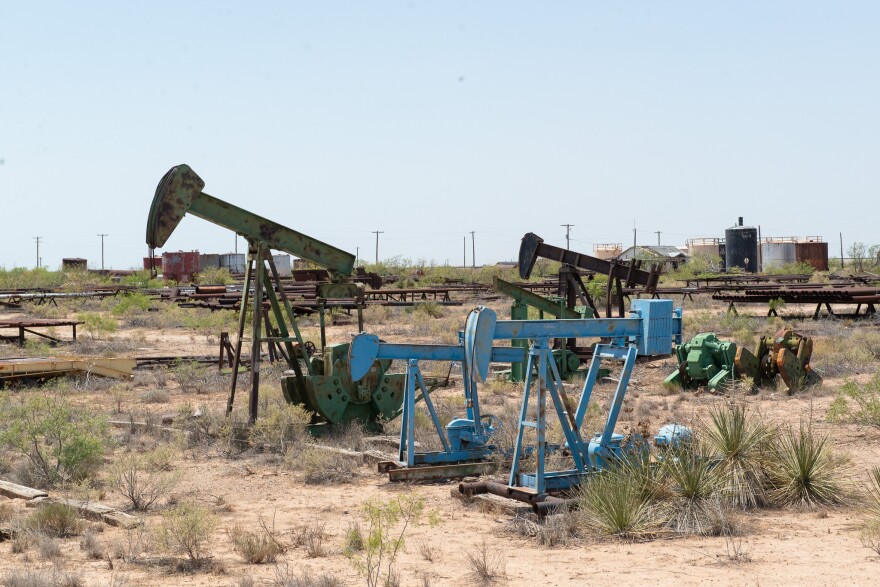ODESSA — The Environmental Protection Agency has approved a Texas company’s application to capture carbon dioxide from the atmosphere and inject it underground, becoming the first project in the state to be awarded such a permit.
Occidental Petroleum Corporation, a Houston-based oil firm, will start storing 500,000 metric tons of carbon dioxide in deep, non-permeable rock formations 4,400 feet underground as soon as this year. The facility will be located 20 miles southwest of Odessa.
“This is a significant milestone for the company as we are continuing to develop vital infrastructure that will help the United States achieve energy security,” Vicky Hollub, the company’s president and CEO, said in a statement. She said these permits will help energy companies “address their emissions or produce vital resources and fuels.”
Carbon dioxide is a byproduct of oil and gas production and the largest contributor to climate change. Oil and gas facilities leak or vent the greenhouse gas, which traps heat in the atmosphere and prevents it from cooling. Environmentalists and the oil and gas industry are divided over the environmental benefits of carbon capture.
While the industry has hedged its climate goals on the technology, environmental policy experts remain skeptical about whether it significantly reduces air pollution, saying the world should transition to other fuel sources to slow climate change. Some Texas scientists say the injection method has been tested and proven to work for years and now needs to be implemented.
Oxy will attempt to reduce the output of the gas through a technology called direct air capture, or DAC. It grabs the carbon dioxide from the atmosphere and separates it from other particles in the air by incinerating them. The equipment then compresses the gas to a brine before transporting and storing it permanently underground.
According to the draft permit, which the EPA presented to the public for feedback last fall, Oxy will monitor the pressure and temperature of the well and downhole. It will measure every second on the surface and every ten seconds inside the well, providing a reading every ten minutes. Workers will account for corrosion and groundwater every three months. The company must alert the EPA 30 days before most tests or if there are any changes. It must also alert them of any malfunctions within 24 hours.
Virginia Palacios, executive director of Commission Shift, an oil and gas watchdog group, said Oxy’s permit application redacted certain details regarding the layers where the carbon dioxide would be stored, which only the EPA could review. She said that concealing this information gives residents no assurance that the gas will stay put, adding that the public should have been allowed to evaluate that information. The permit contains information showing the depth and construction of the injection well as well as the layers of rock.
More companies could follow Oxy’s lead, and win quicker approval if Texas regulators win the authority to grant such permits. The Texas Railroad Commission, the state agency regulating oil and gas companies, has applied to the EPA for the power to issue similar permits. The EPA is currently accepting public testimony. A public hearing for the public to issue feedback has not been set.
The Texas Tribune is a nonprofit, nonpartisan media organization that informs Texans — and engages with them — about public policy, politics, government and statewide issues.

